The mods and myths of Les Paul's 'number one' Goldtop
Tom Doyle was recruited by Les Paul 57 years ago to make the master guitarist ’s ambitious modding projects come to life. Here he walks through the mods of this historic instrument
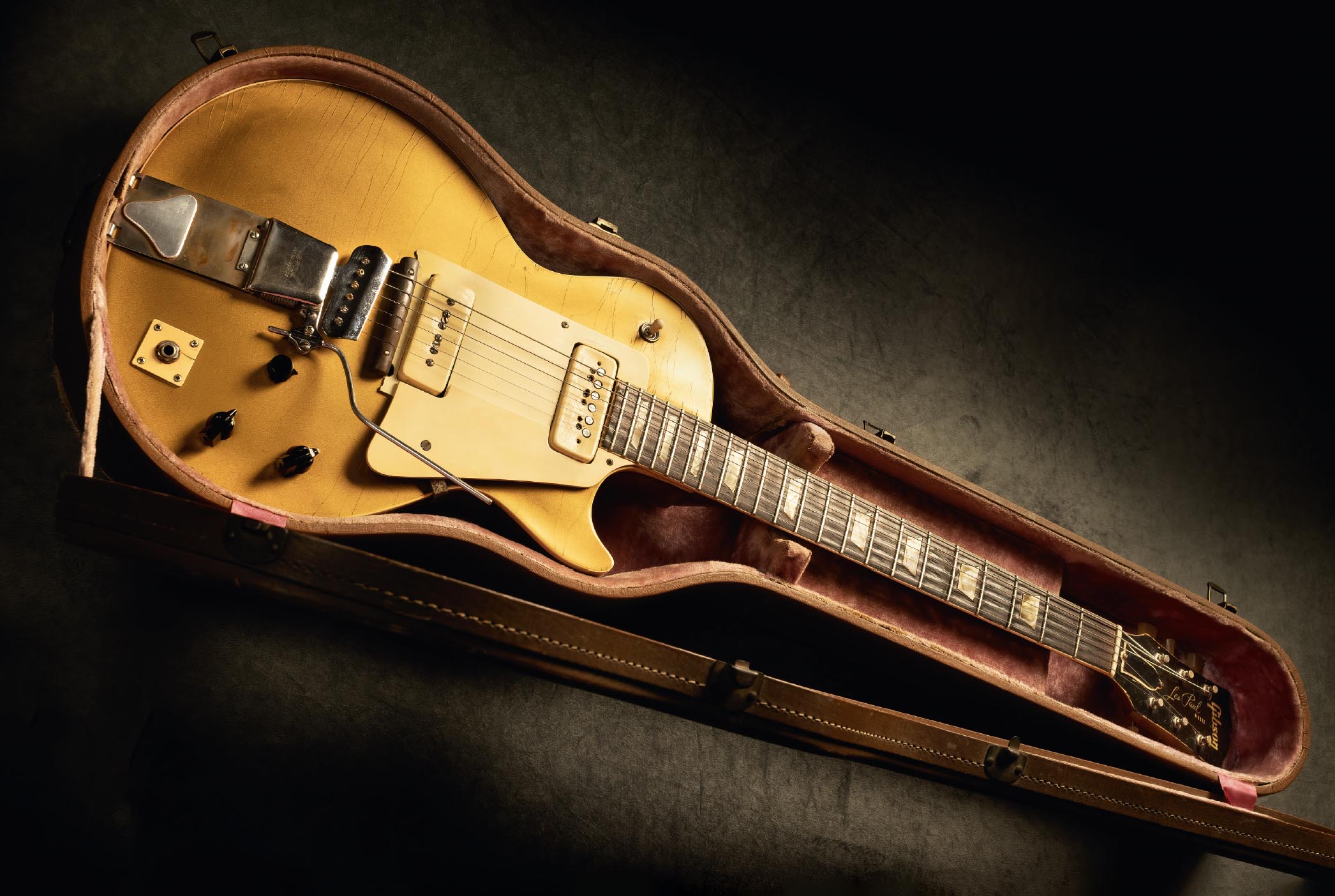
Nobody alive knows more about Les Paul’s ‘Number One’ 1952 Goldtop than Tom Doyle. After watching Tom, an accomplished guitarist and luthier, perform live in the mid-60s, Les invited him to become his personal tech. The term ‘tech’, however, falls somewhat short of describing what Les, with his tireless urge for tinkering, had Tom do for him.
“First of all, Les didn’t like to sleep,” Tom says. “I would be there until six o’clock in the morning working on guitars and I’d say, ‘Les, I got to go home’. And he’d say, ‘Okay, we’ll work on this tomorrow.’ I mean, it just never stopped. He just had so many ideas: he would think of them, dream of them constantly.
“And many, many times, he would tell me: ‘Tom, this is all supposed to be, don’t you know?’ And I said, ‘I guess I’m supposed to be here too.’ And he’d say: ‘Well, of course! That’s why you’re here.’ It was such an honour to me – I idolised him since I was nine years old. And to have him ask me to work with him, well, forget it... That was my dream.”

Tom says his initiation into the role of Les’s right-hand man came when Les invited him round to assess some guitars that had fallen into disrepair.
“It was the day after we’d met, when he’d come to see me play,” Tom recalls. “He said, ‘Tom, I want you up at the house tomorrow about three o’clock. Can you be there?’ I said, ‘Sure I can.’ He said, ‘I want to show you a few things…’
“So he took me down in the cellar underneath his kitchen and pointed to a row of guitars that were hanging on a sort of wire, with water dripping down on them. And I said, ‘Les, this is terrible. These guitars are fantastic. You used these on your shows and Listerine commercials and all of that…’ And he says: ‘Well, that’s why I’m having you look at them. You take that one, that one and that one home. I want to see what you can do.’”
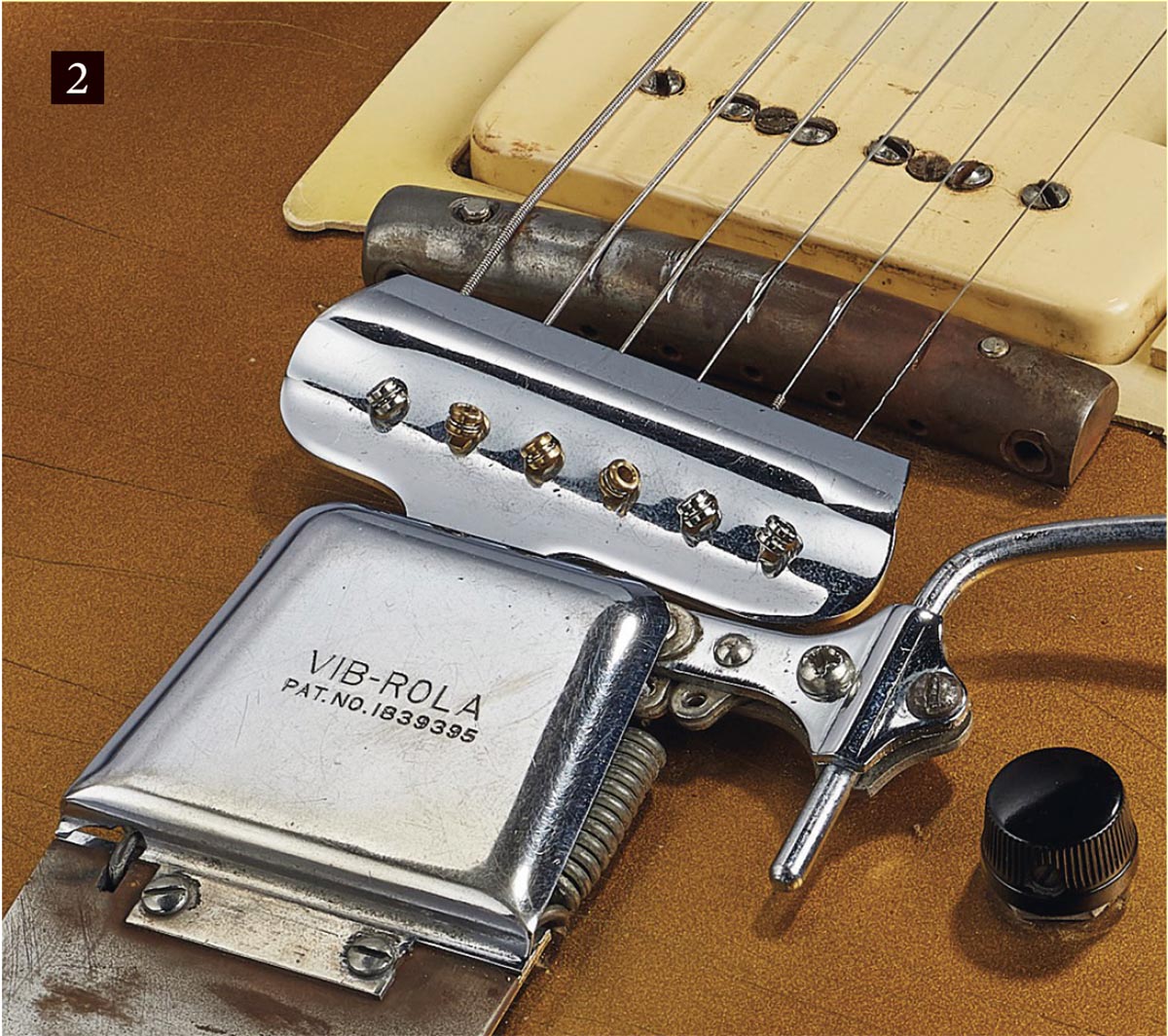
Tom passed this strange ‘audition’ for his guitar repair skills, returning the guitars to Les some weeks later, astonishing the guitarist with how perfectly he’d restored them. After that, it was game on for all Les’s modding requests – with Tom as his ‘Mr Fix It’. Tom says it wasn’t long before Les brought his ‘Number One’ Goldtop to modify further.
Get The Pick Newsletter
All the latest guitar news, interviews, lessons, reviews, deals and more, direct to your inbox!
“It was one of the early ones that I worked on, but he was still working with that guitar right up to the 70s. He was asking me to maintain it, put bigger frets in it, change this, change that, make a pickguard that would fit the pickups when he moved them – all that kind of stuff.”
Tom mentions that Les always kept updating the ‘Number One’ because of sound, above all else. “He loved the sound of this guitar. He loved the sustain on this guitar. So he didn’t really move away from it. Essentially, he was really striving to get what he wanted out of it.”

Some of the primary mods relate to getting low-impedance signal out of the guitar. Tom explains what Les was looking for when plugging straight into the board for recording.
“He wanted clarity and sustain. Not the [compression-based] sustain that came later on with the Les Paul guitars, with amplifiers in overdrive – but resonant sustain. He used to say, ‘Everything has resonance; just hit that table with your hand and you can feel it vibrating. That’s what’s happening on the guitar.’ That’s what he wanted to achieve.
“The pickups are mounted directly into the wood. Les chopped out wood to move the pickups to find out where the best positions would be,” adds Tom.
Besides the huge route for pickup positioning, the guitar is also notable for its hum-cancelling phantom coils, which pre-date Seth Lover’s PAF. Tom says, however, that it’s a myth that Les Paul didn’t like humbucking pickups, though he had some reservations about a side-by-side coil layout.
“I think it’s a major misconception that Les did not like humbuckers,” Tom says. “He was using [the noise-reducing principle behind humbucking pickups] since the late 40s. He just didn’t like humbuckers where the coils were side by side...he preferred humbuckers that were piggybacked [stacked], because it was clearer and there’d be no distortion. He also liked putting coils in different parts of the guitar – and using that method he could still get humbucking.”
Les Paul ‘Number One’ – A Closer Look
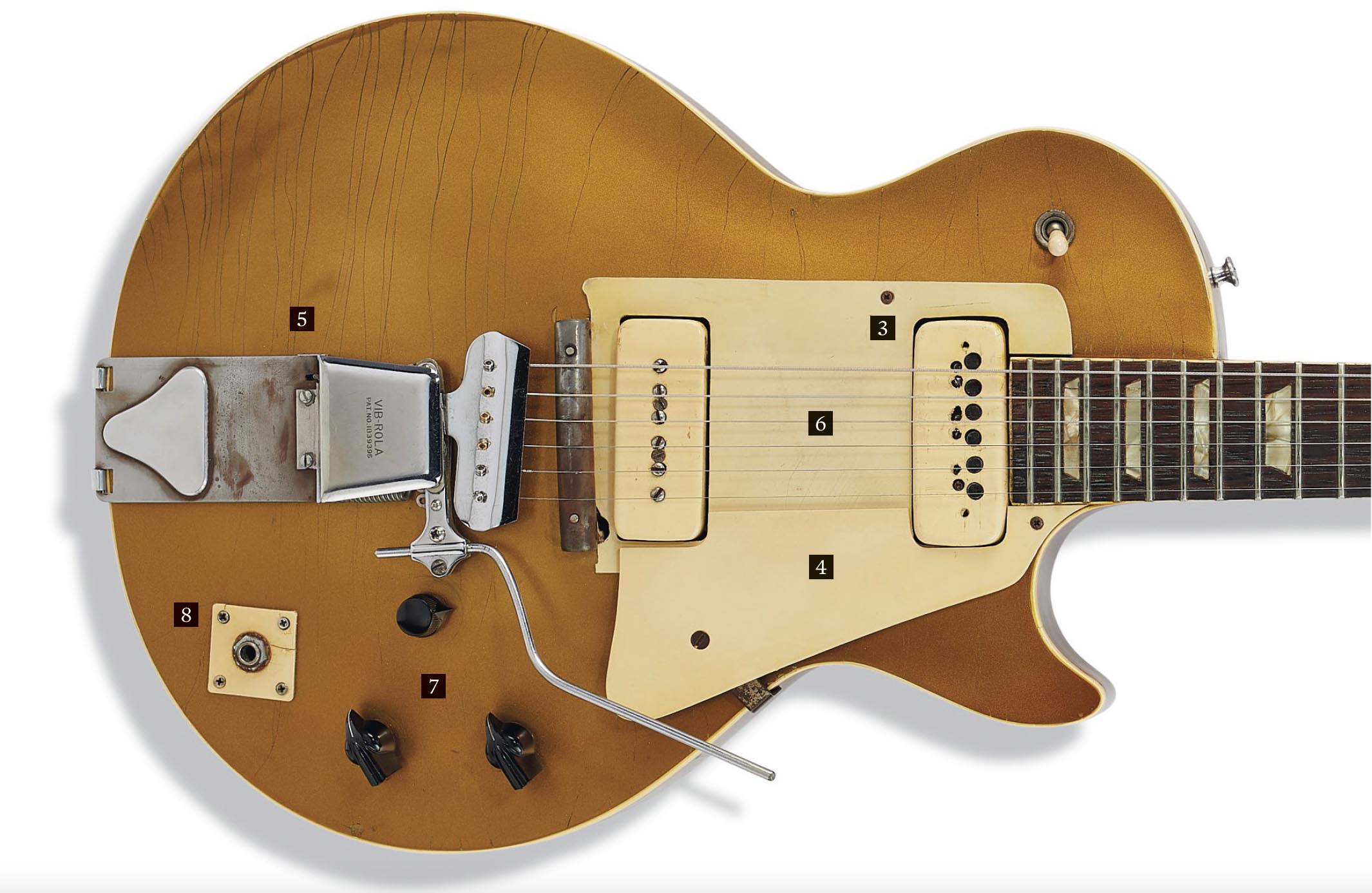
3. Neck Pickup
The modded neck pickup was made by Les, Tom says. “They may be DeArmond magnets, but they were not DeArmond pickup windings – Les wound everything to be lower impedance.”
4. Pickguard
The oversize pickguard was made and fitted to cover a large and crude bit of DIY pickup routing that Les, in a fit of innovative zeal, performed himself with ‘a hot screwdriver.'
5. Kauffman vibrola
Fitting the Kauffman Vibrola required some homegrown mods. Tom says, “The Vibrola had to have a plate added to extend it so it could be mounted on the guitar.”
6. Strings
“Les initially liked heavy strings. So setting it up with 12 to 54 was common, but he slowly changed to a lot lighter gauge as he got older and it got tougher to hold down the strings.”
7. Control knobs
The exact knobs fitted to the three-control layout (originally just two-control, Volume and Tone) would chop and change. The smallest knob selects between top or side output jacks.
8. Output socket
There are two jack sockets, the top one for high-impedance signal, the side for low. A large Cannon-type connector was fitted on top but Les changed it to a 1⁄4-inch jack later on.
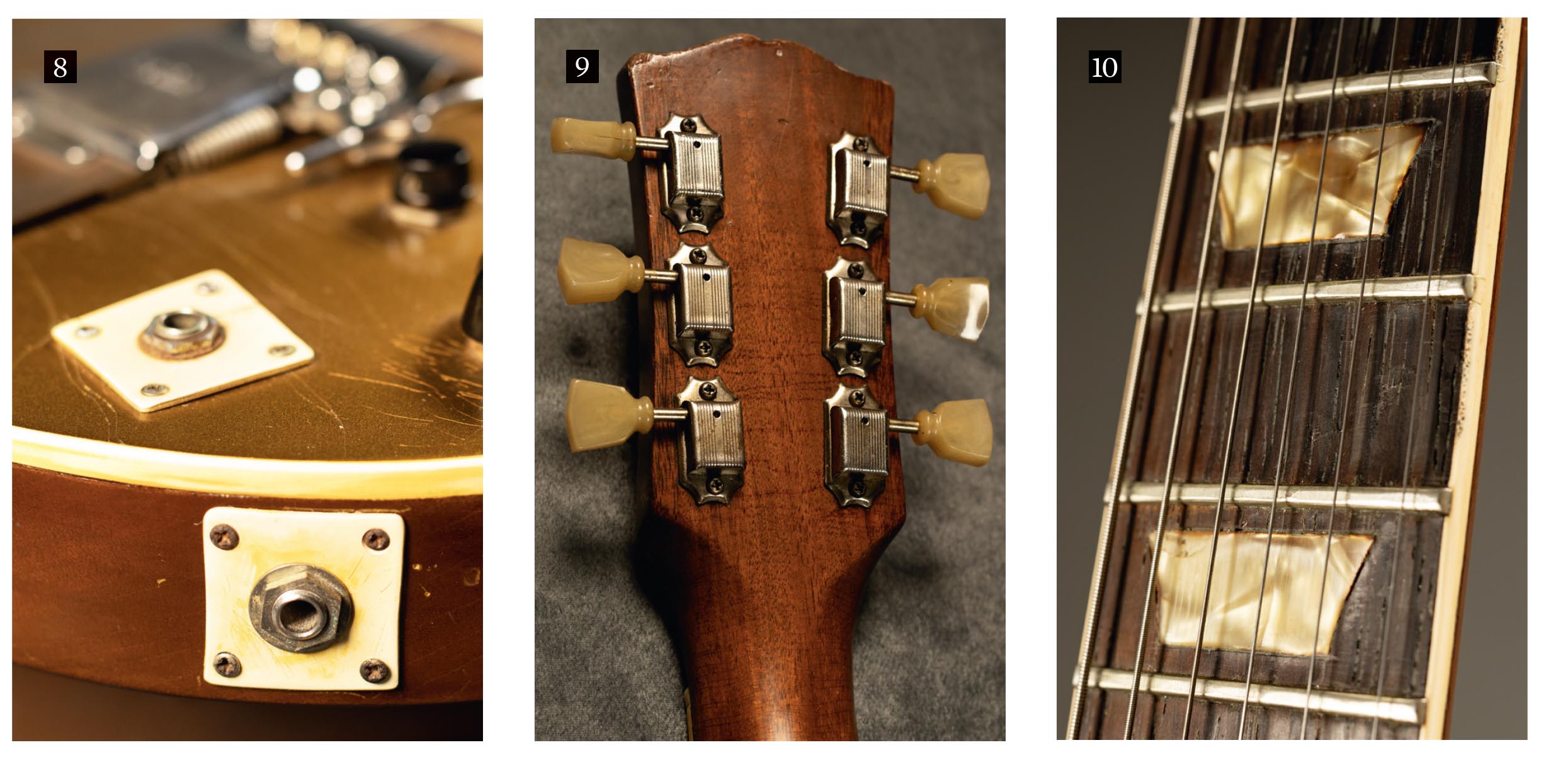
9. Serial number / tuners
Like other early LPs from ’52, the reverse of the headstock does not feature a serial number. Likewise, tuners appear to be single-ring ‘Keystone’ Kluson with no branding on the gear covers.
10. Frets
Tom Doyle says he refretted ‘Number One’ three times with progressively larger frets. Interestingly, he adds that Les liked an unpolished surface to the fret crowns.
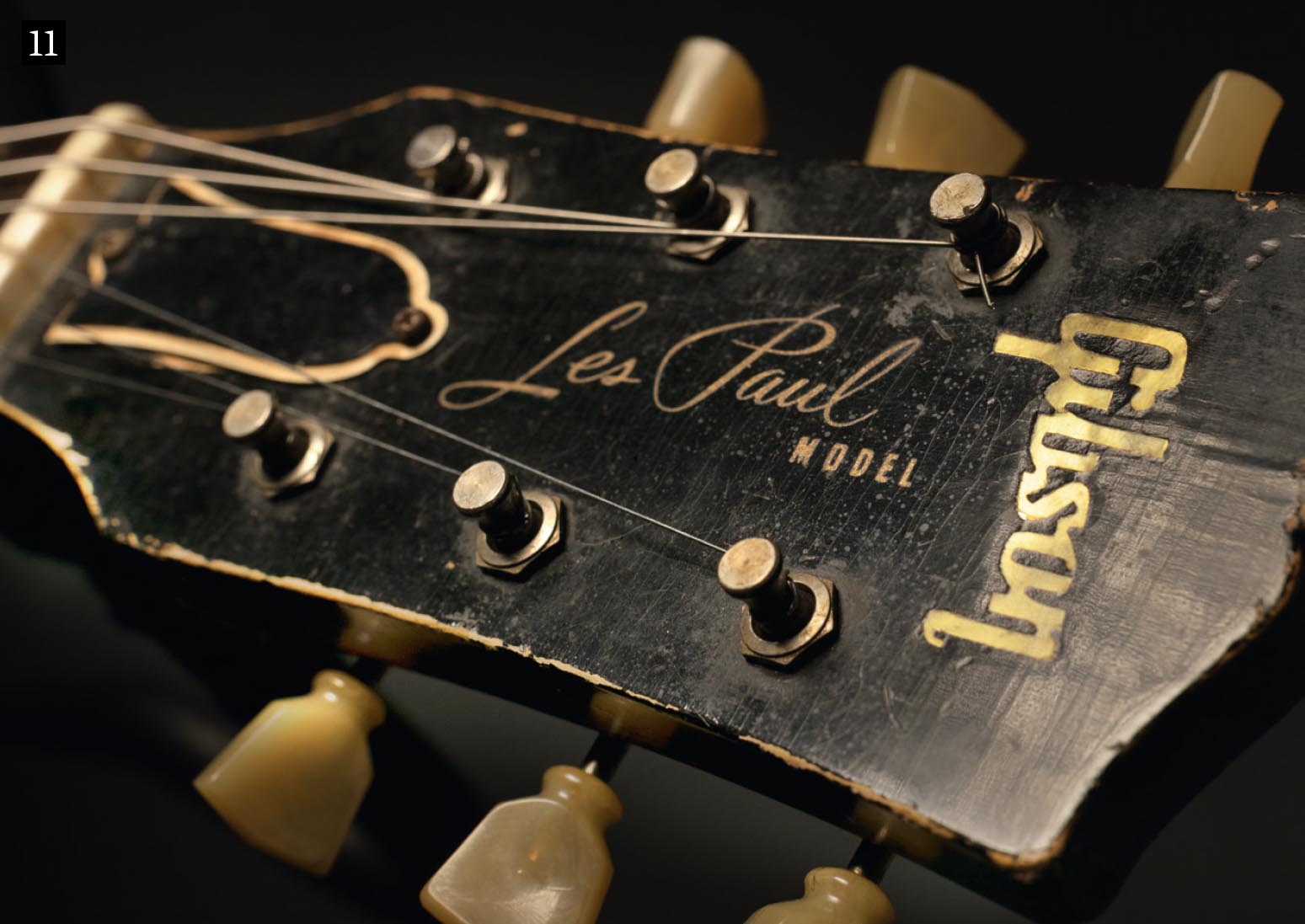
11. Trussrod cover
The guitar’s trussrod cover is actually fitted slightly off the centreline. As with other early Les Pauls the dot of the ‘i’ in the Gibson logo is in contact with the ‘G’, not floating free.
Myths and Misconceptions: Les and the SG
While we’re on the subject of misconceptions, Tom is also keen to explain why Les didn’t warm to the SG-shape Les Paul model that supplanted the singlecut Les Paul in 1961.
“He didn’t like it in the sense that the neck was very movable when you played. He had a lot of strength in his hands. And with an SG you can actually create vibrato with the neck moving back and forth, with the original neck tenon that they had on it. And so that part of it, he didn’t like – but he loved the fact it had a very fast neck, no question about it.
“He could reach even further up the neck than on a regular Les Paul, too – you just couldn’t get the same kind of sound, resonance-wise because it was not the thickness of a Les Paul body and also it didn’t have a maple cap on it like his Goldtop. But, at first, he just thought, ‘Well, we’ve got to go with it because these changes are for reasons of economics and because people want a lighter guitar.’”
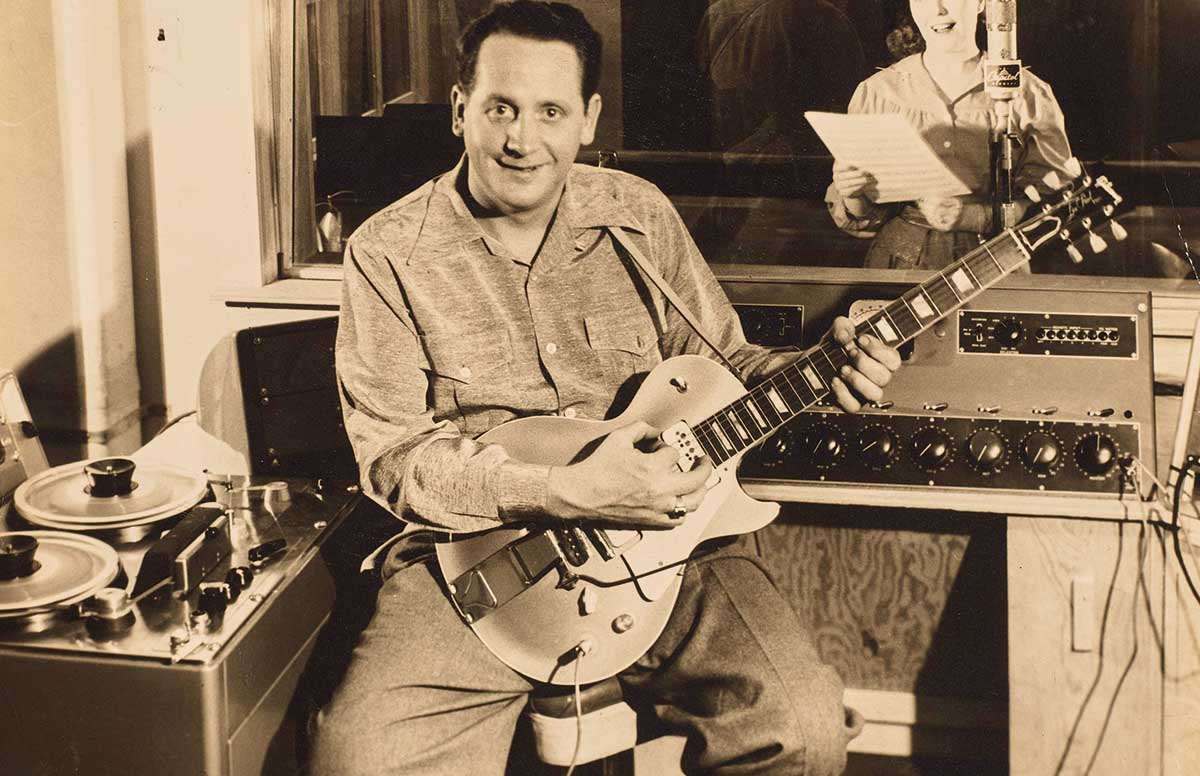
To Tom’s surprise, after many years of working together, Les Paul decided to give ‘Number One’ to the man who had helped him maintain and upgrade it for so long.
“I certainly get emotional with it,” Tom admits. “When he gave it to me, he said this is for you, Tom. You should have this guitar. You’re the one to take care of it. And I said, ‘Are you sure?’ and he said ‘I’m sure, or I wouldn’t be giving it to you. Here it is, take it.’ And nobody knew I had it. And I didn’t tell anybody either, because that was what I had with Les – confidence in one another, but confidentiality as well.
“I do feel very emotional about it, I really do. But it’s time for the world to see what Les was and what was most important to him. And we’re so proud to be able to present it to the world – Gene Paul and I are doing this, and it’s just amazing. But I have to say that it’s tough for me to let it go.”
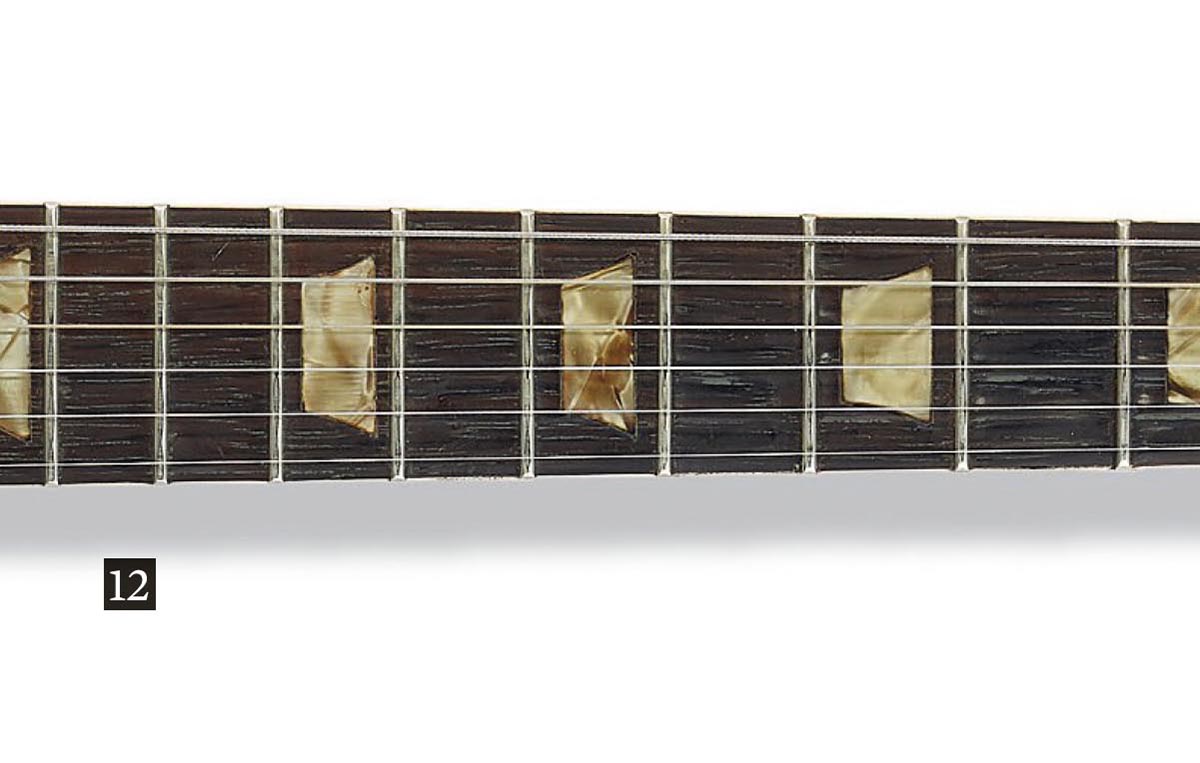
12. Fingerboard
Evidence of Les’s love for ‘Number One’ can be found on the highly worn fretboard, which “looks scalloped”. The neck is bound, unlike early production models, a one-off custom feature.
Les Paul ‘Number One’ – Under the hood
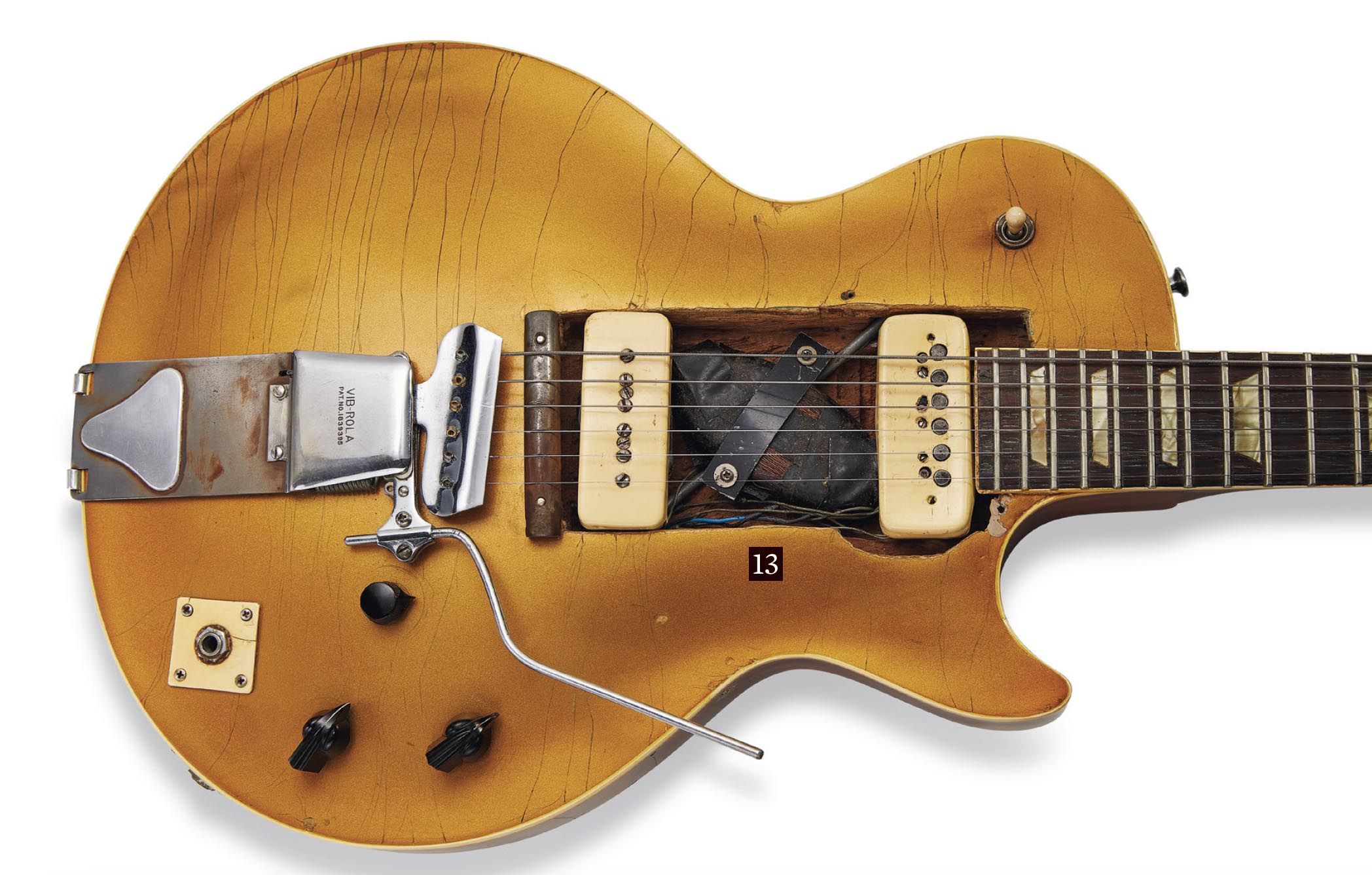
13. Pickup routing
Beneath the oversize modded pickguard is the infamous ‘swimming pool route’ that allowed Les to move the pickups’ position and house a hum-cancelling Q-coil to reduce noise.
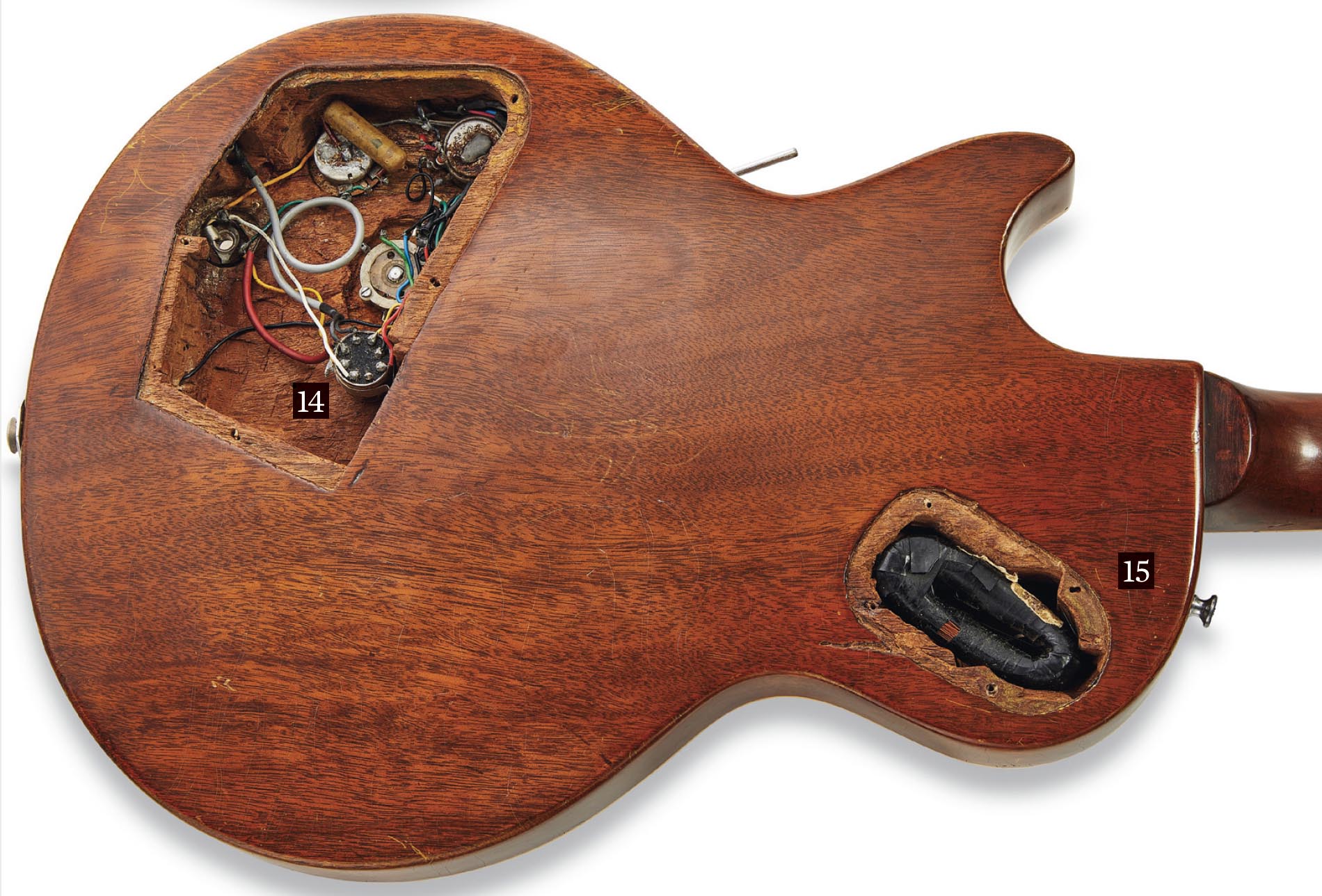
14. Electronics
Heavily modded electronics included a small transformer to step up or step down output/impedance.
15. Phantom coils
A much-enlarged pickup-selector control cavity houses another ‘phantom’ humbucking coil. There was one coil for each pickup so both were hum-suppressing.
Jamie Dickson is Editor-in-Chief of Guitarist magazine, Britain's best-selling and longest-running monthly for guitar players. He started his career at the Daily Telegraph in London, where his first assignment was interviewing blue-eyed soul legend Robert Palmer, going on to become a full-time author on music, writing for benchmark references such as 1001 Albums You Must Hear Before You Die and Dorling Kindersley's How To Play Guitar Step By Step. He joined Guitarist in 2011 and since then it has been his privilege to interview everyone from B.B. King to St. Vincent for Guitarist's readers, while sharing insights into scores of historic guitars, from Rory Gallagher's '61 Strat to the first Martin D-28 ever made.
“His songs are timeless, you can’t tell if they were written in the 1400s or now”: Michael Hurley, guitarist and singer/songwriter known as the ‘Godfather of freak folk,’ dies at 83
“The future is pretty bright”: Norman's Rare Guitars has unearthed another future blues great – and the 15-year-old guitar star has already jammed with Michael Lemmo











